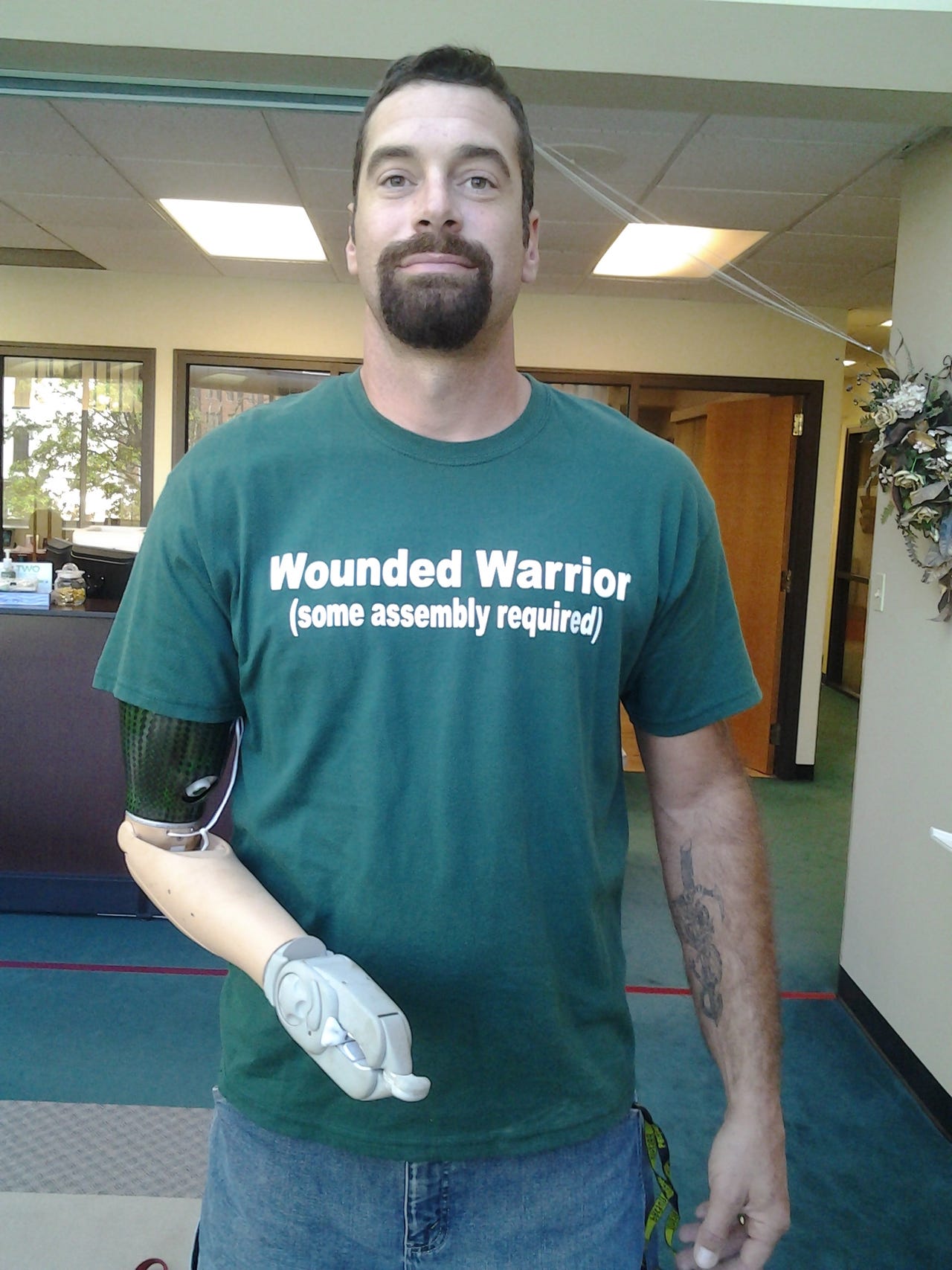Thought-controlled bionic arms now available off-the-shelf

US Army Sergeant Glen Lehman was on a routine patrol just outside Baghdad in November of 2008 when an explosion ripped through his tank. It was his first tour of duty.
The IED tore Lehman's right arm off above the elbow and left him with severe wounds to his left thigh and forearm. After medics stabilized him he was transferred to Walter Reed in Washington D.C. for further treatment. Then he began a long, painstaking recovery.
"I had paired extremity issues," Lehman tells me over the phone. "I lost my right arm and lost the use of my left arm. I didn't receive my first prosthetic device for three months."
That device was a myoelectric powered prosthesis, which is a common option for upper limb amputees. The term "myoelectric" refers to the electric properties of muscles. A myoelectric prosthetic device uses the electrical signals generated during muscle contraction to control an externally powered jointed limb.
It sounds like science fiction, and myoelectric devices are a big step forward compared to unpowered prostheses, but in practice the most widely used versions of the artificial limbs are crude and cumbersome.
Robotics
"I controlled the arm by making my bicep or triceps flex," recalls Lehman. "I had to learn to isolate those muscles, and then I had to make them flex repeatedly. Depending on how I flexed, it caused the limb to close or open, to move the hand clockwise or counter clockwise, or to move up and down. It doesn't feel natural to do it and it's not very intuitive."
The problem isn't in the powered prosthesis, but in the controls. Basic myoelectric devices rely on simple electrodes.
"The traditional system works by measuring the amplitude of one or two signals," says Blair Lock, managing partner at CoApt, a Chicago-based biotech company that created a better off-the-shelf control solution for amputees. "It's very basic 1950s technology that relies on users doing Morse code with their muscles to cycle through the available functions. You have one or two signals to do four of five different things."
In partnership with the Rehabilitation Institute of Chicago, CoApt began developing a new kind of control system for powered prostheses, one that drew inspiration from advances in voice and facial recognition. "Both use algorithms to decode sets of electronic information," says Lock. "Our idea was to try to find patterns in the electronic information that muscles give off. What does that electronic pattern look like when the user is naturally and intentionally trying to close his hand?"The resulting device, which CoApt is calling the Complete Control System, is a small black box that can be plugged into existing powered prostheses. The system uses sensors to read the unique electrical signals an amputee's muscles produce when performing intuitive functions, such as grasping with a hand that's no longer there. Using three microprocessors, the system's algorithms map the signals, decode the user's intention, and use that information to control the powered limb.
The result is an intuitive experience for the amputee, who doesn't have to undergo extensive training to complete simple functions.
"It took me one week with the CoApt controller to get really comfortable with the arm," says Lehman, "compared to about six months with the old system. It's natural and the prosthetic feels like it's part of you. I can do things faster, easier, and with a lot less fatigue."
CoApt doesn't make powered limbs. Thanks to its relationships with prosthetic device manufacturers, its system is plug-and-play with the limbs that are most commonly used today.
"There are so many great advances on the horizon," says Lock, "whether it be implanted sensors or brain-machine interfaces. Our controller technology will work with those solutions. But the really important thing is that it's available now and can be used with the devices that actual amputees are using today. That really motivates us."
Earlier this week, CoApt received a Chicago Innovation Award for its Complete Control System. Sergeant Lehman was on hand to demonstrate what a difference the device has made helping him reclaim his life.